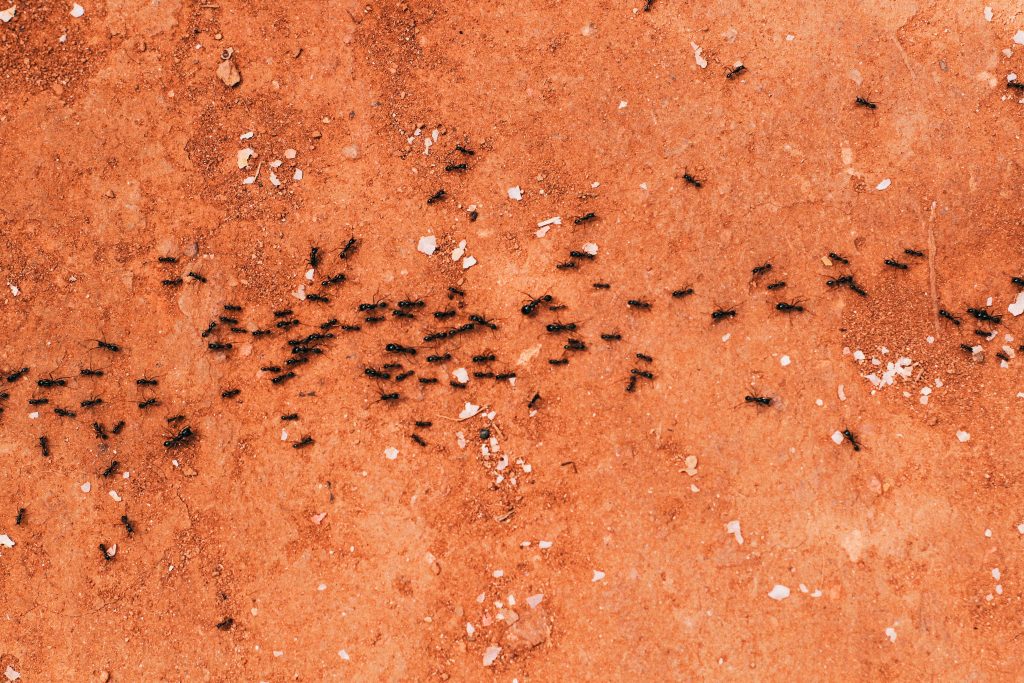Where Ants Come From
Surveys in recent years have indicated that ants are the #1 nuisance pest in America. This may be surprising to some; however, they are also considered one of the most difficult pests to control. Depending on the species, ant colonies can have thousands of members. While over-the-counter sprays may kill off surface workers, do-it-yourself homeowners often become easily frustrated when activity stops for a few days and then reappears in full force. In reality, homeowners applying over-the-counter insecticide sprays often do more harm than good. Some species of ants including Pharaoh ants that encounter these insecticides will bud off or divide their colonies into multiple satellite colonies making the problem more difficult to control. For that reason, contacting a pest control professional is the first steps in controlling ant infestations in Colorado Springs.

Homeowners often question where ants are coming from, what is attracting them and how they can prevent future ant infestations within their Colorado Springs home. While a vast majority of ant species have the main portion of their colony below ground, there are species that utilize wood, walls voids and other various areas for their homes. Ants are attracted primarily to food and water sources and are therefore most prominent in kitchens and bathrooms of homes. These are not however the only places they are likely to be found. Surveys have indicated that of homes with active ant infestations, activity has been found within walls (73%), bedrooms (61%), living rooms (60%), basements (54%) and even heating and air conditioning units (37%). These areas are typically secondary to activity in the kitchen (96%) and/or bathroom(s) (89%).
Due to their size, ants often utilize even the tiniest of gaps/cracks to enter homes. Ant prevention starts on the exterior of the home. Sealing gaps and cracks with silicone, repairing loose mortar, replacing weather stripping, repairing/replacing torn window screens and trimming back foliage from the home are all great places to start in stopping ants from entering the home. Be sure to check around plumbing/utility penetrations for any gaps that may need to be sealed to prevent entry. The same is true of the interior for the interior of the home. In addition, the home should be inspected for any potential water leaks as these are often a major attractant for ants. Cleanup of decaying vegetation on the exterior of the home will also aide in decreasing water sources.
On the interior of the home, a strong focus should be on eliminating both food and water sources. Removal of left over pet food, spills, dirty dishes, garbage, etc. should occur promptly or on a daily basis at minimum. All of these items are food sources for ants and if left unattended for any length of time can become an attractant. Empty juice bottles or pop cans should be rinsed out before disposing of them as should food cans. Standing water in even the smallest of quantities can be sufficient to attract ant activity. When cleaning, make sure that surfaces are also thoroughly dried and sinks drained.
In the event that you encounter an ant infestation, refrain from utilizing over-the-counter products until a pest control professional arrives to address the infestation. Instead, utilize cleaning measures to provide temporary control. Vacuuming and sweeping up ants that are present and then when possible thoroughly cleaning the areas will help to eliminate the pheromone trail indicating to the other colony members that there is a food or water source available.
Ant activity drastically increases during periods of warm weather and although summer is the season in which most activity occurs, it is possible to find activity year-round as weather/climate permits in Colorado Springs.